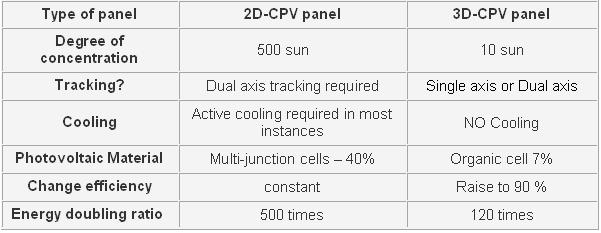Here, I will present my humble idea about 3D solar cells and include four design 3D.
As we have already mentioned, the three-dimensional shape of the solar cells or the solar module, it is in order to catch the reflected light on the surface of the cell or the module, if we want to introduce a more serious and effective system, We must abide by what follows.
First: there is no need to design a 3D solar cell at the nanotechnology or Micro level, because it will require a lot of time and money so it is better to have a design on a larger level.
Second: it is preferable to use solar cells that have a large reflection of light on their surface, silicon cells both in the first and second generation the reflection ratio of light is small 30% and less with the use of anti-reflective coating.
Thirdly: the 3D solar cells must address optical transmission (Photons that pass through the cell) with optical reflectivity, the optical transmission in silicon cell is also a little 18%.
Fourthly: the 3D solar cells must address energy that turns to heat rather than dissipated by cooling systems, this requires solar cells not to change their efficiency with temperature unlike silicon cells.
Fifthly: Solar cells must be flexible to easily convert from flat shape to three-dimensional shape, but silicon cells are solid.
Sixthly: solar cells used should be cheap, because this achieves commercial turnout, silicon cells are expensive.
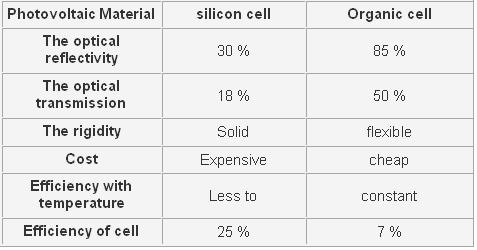
We conclude from the above conditions that silicon cells are not the best in three dimensional design, we need a new kind of solar cell that has all the conditions like Organic solar cells.
Organic solar cells belong to the third generation. At present average cell efficiencies vary between 3 and 7 percent. Organic solar cells and polymer solar cells are built from thin films (typically 100 nm) of organic semiconductors including polymers, such as polyphenylene vinylene and small-molecule compounds like copper phthalocyanine (a blue or green organic pigment) and carbon fullerenes and fullerene derivatives such as PCBM.
They can be processed from liquid solution, offering the possibility of a simple roll-to-roll printing process, potentially leading to inexpensive, large-scale production in addition, these cells are useful in 3D form applications where mechanical flexibility and disposability are important.
- Average optical transmission equal 50%
- Average optical reflectivity equal 85%
The first design
3D-PV (Organic)
Organic solar cells are printed on roll made of polyester with a width of 10 centimeters or more and then divide this roller into the lengths (modules) that we want, the cells are printed on one face and the other is coated with a reflective coating material for the optical transmission processing (The light that crosses from the cell reflects on the coating and returns to the inside)

Then bend the solar module in an incomplete cylindrical shape (Cylinder with a longitudinal slit with a width of 5 mm) thus, the solar module and the cells are also in three-dimensional position, the longitudinal slit in the 3D module allows sunlight to enter the cells and does not allow the exit of any reflections.

The slit allows sunlight to enter the 3D solar module, but by a very small percentage because of the small slit area, if we wanted to be the amount of light entering from the slit equal to the amount of light falling on the solar module in the flat position, we should use a solar collector to make a linear concentration along the slit, where the area of the solar collector is equal to the area of the module concentration degree here is one sun, in this system the solar cell efficiency up to 90%.
Solar organic cells do not change their efficiency with temperature rise so it is preferable to have a degree of low concentration of 2.5 to 10 suns.
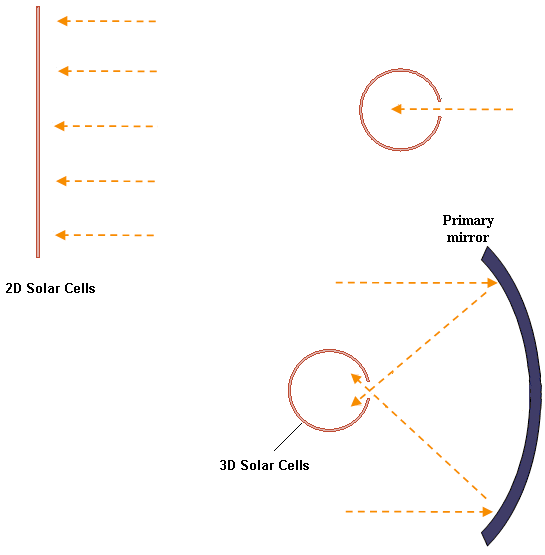
Aluminum cover: The outer cover is made of aluminum, working to keep the solar module in 3D shape, it also provides protection and helps to assemble other parts with the solar module such as side mirrors and lens, the length of the cover is longer than the length of the module a few centimeters from the sides.
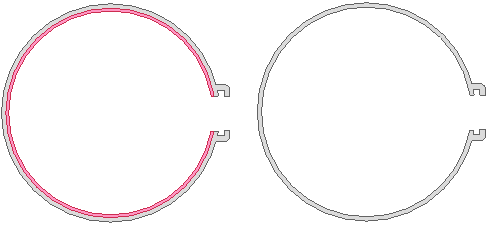
The high efficiency of the 3D solar cell means a small percentage of solar energy which turns into thermal energy, with low concentration, thermal energy increases and the temperature of the 3D solar cell goes up but does not reach the burning of the 3D solar module so we do not need a cooling system.
There is another reason not to use the cooling system, when the organic solar cells heat up, thermal radiation is released like any other object, in flat solar mod- ule the thermal radiation moving to outside but in 3D solar module the thermal radiation moving inside from cell to last, this means that the 3D cell absorbs its own thermal radiation and if this radiation carries photons with enough energy it will produce electricity and this increases the efficiency of the 3D cell also.
The lens is a flat glass slice are made of Anti-reflective solar glass with transmittance 93 % from 380 to 1100 nm and installed inside a cavity in the aluminum cover along the slit, the lens prevents dust from entering the solar module so used only in an environment where there is dust.

The solar collector: Solar collector, which is used with 3D organic solar cells, is a parabola mirrors or Linear Fresnel lens, and install 3D solar cells on the solar collector near the focal length, the parabola mirror is not made of glass but from plastic with a layer from sheet metal mirror from Silver or Aluminum with reflectivity 95%
- The parabolic mirrors system follows the sun on one axis.
- Fresnellens system follows the sun on two axes.
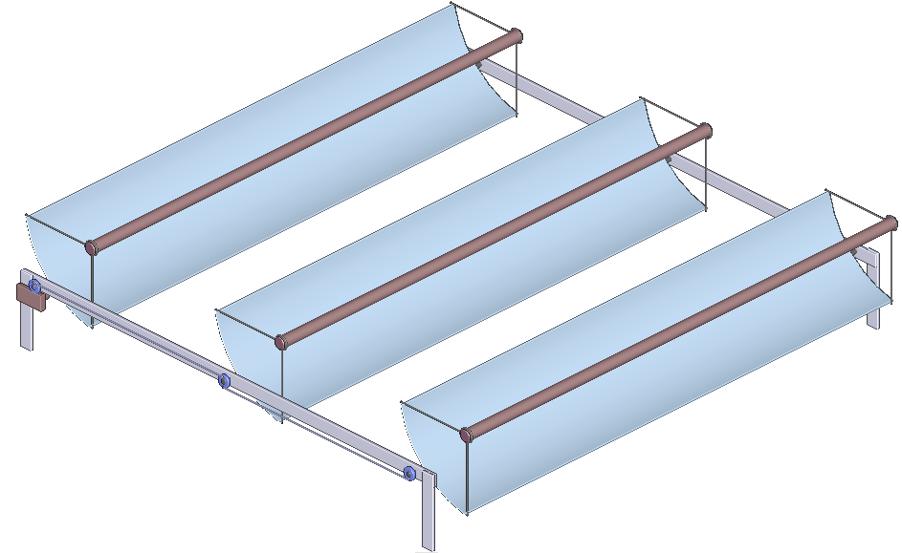
There are many modern companies that produce organic solar cells, these companies offer different types of cells in terms of efficiency, price, size and optical properties (reflectivity and transition) you can buy the type you want from the company website and the company will send you the cells in an envelope at your address where the light weight of the organic solar cells is allowed to be placed in an envelope.
